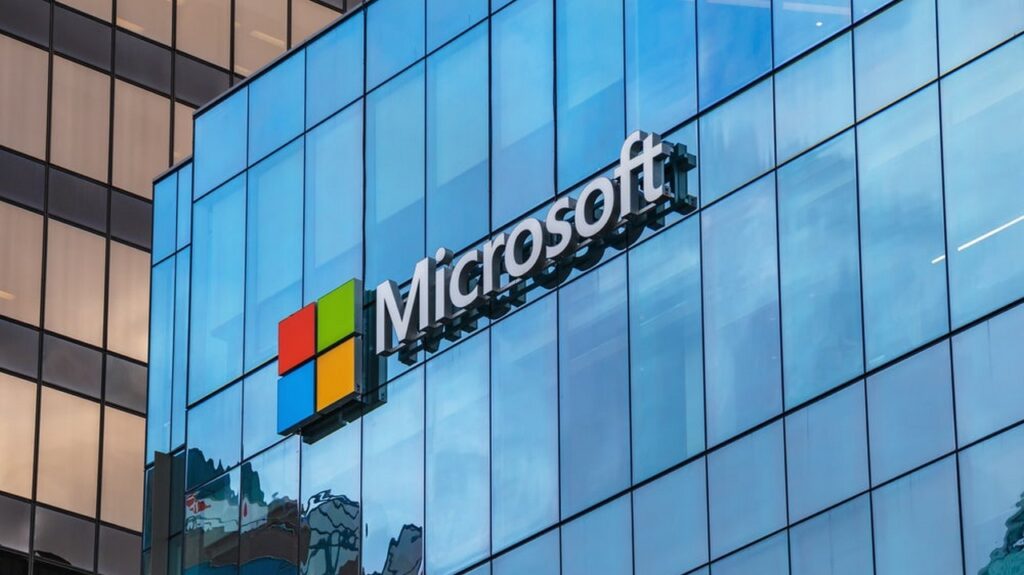
Microsoft Corp. MSFT delivered a blockbuster quarter that beat expectations across the board, with cloud and AI momentum now so strong that Goldman Sachs sees the stock marching near all-time highs at $480 per share.
In a note shared Thursday, Goldman Sachs analyst Kash Rangan said Microsoft’s fiscal third-quarter results reinforced confidence in the company’s long-term AI leadership, as Azure growth reaccelerated and new data pointed to durable enterprise demand for cloud infrastructure and AI tools.
What Drove The Beat?
For the quarter ending March 31, Microsoft reported earnings per share of $3.46, exceeding estimates of $3.21, while revenue climbed to $70.07 billion, ahead of the $68.48 billion consensus.
Azure and other cloud services revenue rose 35% year-over-year in constant currency, accelerating from 31% in the prior quarter and topping Goldman’s forecast of 32%.
Crucially, artificial intelligence continues to drive Azure’s growth. AI-related services contributed 16 percentage points of that 35% increase, up from 13 points last quarter. Non-AI workloads also posted their first acceleration since early 2024, growing 19%, a sign that demand is broadening beyond early AI adopters.
“We reiterate our Buy rating while raising our PT to $480 (vs. $450 prior) following F3Q25 outperformance across all key metrics,” Rangan said.
He added that Microsoft is increasingly well-positioned to capture a share of the AI market across both infrastructure and application layers.
CapEx: Still High, But Under Control
Microsoft’s capital expenditures came in at $21.4 billion, marking the first sequential decline in CapEx since the first fiscal quarter of 2023, which helped ease concerns that the company was overspending to maintain its AI advantage.
Despite the pullback, Goldman says Microsoft’s capital expenditures (CapEx) are still likely to grow faster than cloud revenue in the short term, reflecting longer-term investments required to meet rising demand.
Rangan held his fiscal year 2026 CapEx growth forecast at 21% year-over-year and signaled that capital intensity may begin moderating after years of heavy investment.
This, Rangan said, should be a “relief for the tech food chain,” as it suggests peak CapEx is not yet behind the company but may soon be reached.
Copilot Gains Traction
Another standout: Microsoft’s generative AI product Copilot continues to gain adoption, with user numbers up 3x year-over-year and over 230,000 organizations engaging with Copilot Studio.
This supports Goldman’s thesis that Copilot could evolve into the defining enterprise application of the AI era.
Record customer seat purchases further strengthen the case that Copilot is not just a flashy experiment but a sticky, revenue-generating platform that could replicate the kind of success seen in Microsoft 365.
Q4 Guidance And AI Outlook
Looking ahead, Microsoft guided fourth-quarter cloud margins to about 67%, with intelligent cloud revenue expected between $28.75 billion and $29.05 billion.
Productivity segment sales are forecast at $32.05 billion to $32.35 billion, while more personal computing should bring in $12.35 billion to $12.85 billion.
Goldman says that despite macroeconomic uncertainty and potential tariff risks, the company is set up to post free cash flow growth of 3% and earnings-per-share growth of 17% in fiscal year 2026, with Azure maintaining a 30% growth rate.
The firm expects earnings to reaccelerate into the high double digits as Microsoft exits its capital-intensive phase and enters the high-margin inference stage of AI deployment.
“We continue to believe that as Gen-AI moves from the infrastructure layer to the platform/application layers, Microsoft is well positioned to capitalize on this shift,” Rangan said.
Shares of Microsoft were up as much as 8.4% in premarket trading Thursday.
Read now:
Photo: Shutterstock
